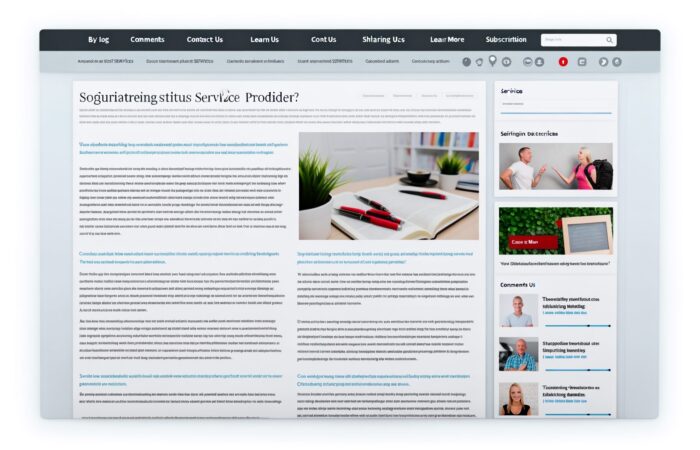Welcome to the World of Writing Valuable Reviews and Comparative Analyses!
Hey there! If you’ve ever wondered about the art of crafting insightful and helpful reviews, or delving into the nitty-gritty of comparative analyses, you’re in the right place! Writing reviews might seem straightforward, but producing content that truly resonates and provides value takes a bit more finesse. And when it comes to comparative analyses, well, that’s an even more exciting journey!
Whether you’re a budding blogger, a seasoned journalist, or just someone passionate about sharing your experiences, understanding how to create meaningful content in this area can significantly enhance your writing impact. So, let’s dive into this fascinating world together!
Why Focus on Reviews and Comparative Analyses?
Imagine you’re about to buy a new smartphone or decide between two new coffee shops. What’s the first thing you do? If you said, “Check the reviews,” you’re not alone! Reviews and comparative analyses are incredibly powerful because they help consumers make informed decisions. They’re not just opinions; they are guidance tools that can sway decisions, shape perceptions, and even influence market trends.
By writing valuable reviews and thorough comparative analyses, you’re not just sharing your thoughts; you’re offering a service. You become a trusted advisor, a go-to expert who helps others navigate through an ocean of choices. And the best part? It’s rewarding to know your words could help someone make a decision that they feel confident and happy about.
Where Do You Begin?
- Experience the Product or Service: First things first, to write a great review or a comparative analysis, you need firsthand experience. Whether it’s a gadget, book, restaurant, or any service, being directly acquainted with your subject matter ensures authenticity in your writing.
- Know Your Audience: Tailor your review to the interests and needs of your audience. Are they budget-conscious? Do they care more about technical specifications or user-friendliness? Understanding your audience enhances the relevance of your review.
- Stay Honest and Fair: It might be tempting to lean towards a positive review if you’ve received a free product, or a negative one if you had one bad experience. Remember, credibility is your greatest asset. Maintain honesty and balance in your reviews.
In a world brimming with choices and information, well-crafted reviews and comparative analyses are more than just beneficial—they’re essential. They empower readers, promote transparency, and foster a community of informed consumers. And you, as a writer, are at the forefront of this movement.
So, are you ready to put pen to paper (or fingers to keyboard) and start influencing the world with your powerful reviews and comparative analyses? Remember, your voice matters, and it can make a real difference.
Understanding the Fundamentals of Effective Reviews
So, you’re interested in crafting reviews that not only capture attention but also provide real value, right? Well, you’ve come to the perfect spot. Let’s dive into the core of what makes a review truly effective. It’s not just about saying whether something is good or bad, but about giving your reader a comprehensive, honest perspective that they can rely on.
First things first, a good review is all about detail. Imagine you’re telling a friend about a new restaurant. You wouldn’t just say “It’s great” or “It’s terrible,” right? You’d talk about the ambiance, the service, the menu, and whether the sushi rolls were as mouth-watering as they looked on Instagram! It’s those juicy details that provide substance to your opinions.
- Be Specific: Generalizations are the enemies of effectiveness. Saying “The service was bad” is vague. But describing how the server forgot your drink twice, now that paints a picture and gives credibility to your review.
- Provide Context: Why did you have certain expectations? Were they met or not? If you’re reviewing a product, who might it be perfect for? Context helps readers gauge relevance.
Next up, let’s talk about the tone. Keeping it friendly and engaging is key. This isn’t a lecture, and you’re not scolding someone for a bad product. You’re sharing insights in a conversational manner. Think of it as chatting with a pal over coffee. This approach keeps your reader engaged and makes your review feel more personal and relatable.
But here’s a little twist – while it’s great to be friendly, you also need to maintain a level of professionalism. This balance shows that you respect your reader and are serious about your review. Use clean language, good grammar, and stay polite, even when you’re delivering harsh criticism. It’s all about how you package that critique!
Lastly, let’s not forget about the importance of being balanced. It’s easy to go overboard when you love or hate something. However, a truly effective review acknowledges both sides. Even if you’re reviewing the worst movie ever, mentioning that one actor who did a decent job can demonstrate your objectivity. Similarly, even the best gadgets have their cons, and your readers will appreciate your honesty in pointing them out.
So, to wrap up, think of writing a review as art. You’re painting a picture with your words. Make it detailed, keep it friendly yet professional, and always strive for balance. Stick to these fundamentals, and you’ll be crafting masterpieces that truly help and inform your readers. And isn’t that the ultimate goal?
Remember, the best reviewers are those who put themselves in their readers’ shoes. They provide the kind of information and insight that they would want if they were on the receiving end. Keep that in mind, and you’re all set to start writing effective reviews.
The Importance of In-depth Comparative Analysis
Hey there! If you’ve ever found yourself toggling between multiple tabs on your browser, comparing products, or reading different services before making a decision, you know how crucial comparative analyses are. They’re not just lists or side-by-side snapshots; they’re the deep dives that really show what’s under the hood of the options you’re considering.
So, why should we care about making our comparative analyses as thorough as possible? Well, let’s break it down:
- Clarity in Choice: In-depth comparative analyses remove the fog around decision making. By examining products or services with a fine-tooth comb, you provide a clear vision of what each option entails. This clarity is invaluable when making choices, especially in a market saturated with options.
- Foster Trust: When you dive deep and present detailed comparisons, it establishes trust with your readers. They recognize the effort to present unbiased and well-researched information, making them more likely to rely on your future reviews.
- Empowering Consumers: Knowledge is power, right? A thorough comparative analysis empowers consumers by giving them the comprehensive data they need. This not only educates them but also boosts their confidence in making a purchase decision.
But, how can you ensure that your comparative analysis stands out and genuinely aids your audience? Let’s consider a few key points:
- Precision in Details: Dive into specifics. Dimensions, functionality, usability, and even customer service experiences can all play crucial roles.
- Balanced Viewpoint: It’s easy to sway towards a favorite or a popular choice. However, maintaining an objective tone and presenting both pros and cons for each option cultivates a balanced view.
- Real-world Application: Contextualize how each product or service could be used in everyday scenarios. This makes your analysis relatable and tangible.
Imagine you’re comparing two smartphones. Rather than just listing specifications, you could explore how the camera performance stands up in low light, or how the battery life holds up during a day of intensive use. This kind of detailed, real-world information can be a game-changer in helping your reader make a decision.
In conclusion, the beauty of a thorough comparative analysis lies in its ability to illuminate details that might otherwise be overlooked. It’s like giving your readers a flashlight in a dark room filled with options. They’ll thank you for it because, with your help, they’re more likely to find something that really suits their needs. So, the next time you sit down to craft a review, remember the power of depth. Your readers are counting on you!
Key Elements to Include in High-Quality Reviews
Whether you’re a budding critic or just love sharing your thoughts on the latest products and services, understanding what makes a review truly useful can make all the difference. Let’s dive into the essential components that can help your reviews stand out and genuinely aid others in making informed decisions.
Factual Accuracy
First things first: get your facts right. Nothing undermines a review more than incorrect information. Double-check details like names, dates, features, and specifications. It’s not just about credibility; it’s about being a reliable guide in a sea of misinformation.
Detailed Evaluation
People adore specifics! A high-quality review dives deep. It’s not enough to say a product is great; you need to explain why. What features stood out? How does it compare to previous models or competitors? Did it enhance your experience in a significant way? The more precise your assessment, the more helpful your review will be.
Personal Experience
Here’s where your unique voice comes in. Share your personal interaction with the product or service. How did it fit into your life? Did it meet or exceed your expectations? Personal stories connect emotionally with readers, making your review more relatable and engaging.
Pros and Cons
A balanced view is crucial. It’s rare that a product is either perfect or a complete failure. Highlighting both strengths and weaknesses offers a balanced perspective that is highly valued by readers. This approach shows that you’ve thought critically about your experience and aren’t biased toward one side.
Contextual Relevance
Understanding your audience is key. Contextualize your review by considering who will be reading it. Are they tech-savvy, beauty enthusiasts, or perhaps outdoor adventurers? Aligning your review with the interests and knowledge level of your audience makes your content more impactful and targeted.
Comparative Insights
Whenever possible, compare. If you’ve used similar products or services before, mention how they stack up against this one. These comparisons can be incredibly useful for readers who are weighing options and looking for the best fit for their needs.
Actionable Conclusion
Wrap up with a bang! End your review with a clear, actionable conclusion. Would you recommend this product or service? Under what circumstances? A decisive viewpoint helps readers come to a conclusion, aiding in decision-making.
Incorporating these elements can really boost the utility and appeal of your reviews. Remember, the goal is not just to inform, but also to engage and help your readers make better choices. So keep it factual, detailed, and, most importantly, honest.
Techniques for Objective and Balanced Comparative Assessments
Ready to dive into the art of crafting objective and balanced comparative assessments? Let’s explore how to raise the bar and ensure your reviews not only shine but also provide real value to your readers. By understanding these techniques, you’ll be guiding your audience through a clear, unbiased perspective, helping them make well-informed decisions.
Stepping Into Neutral Shoes
First things first: objectivity is key. When comparing products, services, or anything really, it’s like being a judge at a talent show. You need to give each contestant a fair chance to impress. This means setting aside your personal preferences. Think of yourself as a detective gathering facts, not a fan cheering in the stands. For instance, if you’re comparing two smartphones, focus on the specs, performance, and user feedback without letting brand loyalty cloud your judgment.
The Balanced Scale Approach
Now, onto balance. It’s all about giving credit where it’s due and pointing out areas that need improvement, equally. When writing your review:
- Highlight the strengths of each option.
- Discuss the weaknesses or limitations without bias.
- Use a consistent framework to evaluate each aspect (like user experience, cost, durability, etc.).
This approach helps your readers see which aspects are superior in one product versus another, making your review a valuable compass in their decision-making process.
Comparative Data is Your Best Friend
Nothing screams “objective” like good ol’ facts and figures. When you provide data, you’re equipping your audience with the tools to make logical decisions. Say you’re comparing two blenders. Mentioning that Blender A has a 300-watt motor while Blender B runs on 500 watts gives a quantifiable edge to Blender B in terms of power. Pair these facts with user testimonials about how each blender handles daily tasks, and your review just got a notch more credible and useful.
Avoid the Pitfalls of Overgeneralization
Each product has its unique context and user base. Avoid making sweeping statements like “this is the best product ever” without clarifying for whom it’s the best. Is it best for professionals, novices, or someone with a specific need? Specifying this helps maintain an objective tone and provides a clear guide for your audience.
Invite a Second Opinion
Lastly, remember that two heads are better than one. If possible, consult or include insights from other experts or users. This not only rounds out your review by covering multiple perspectives but also adds depth and reliability to your analysis.
There you have it! By staying objective, balancing the good with the not-so-good, relying on hard facts, avoiding generalizations, and welcoming other viewpoints, your comparative assessments will not only be fair and detailed but also incredibly helpful for anyone reading them. So, go ahead, apply these techniques and watch your reviews become go-to resources!
Boost Your Reviews with Smart SEO Strategies
If you’re looking to give your reviews a little extra edge and ensure they’re seen by more eager eyes, you’re in the right place. We’re going to dive into some simple, yet powerful SEO (Search Engine Optimization) strategies to help your reviews climb up those search engine rankings. Ready to become more visible online? Let’s get started!
Understanding SEO Basics
First things first, let’s break down what SEO really involves. Think of SEO as the art of making your content easily findable. This means using the right keywords, crafting engaging meta descriptions, and optimizing your content structure so search engines (and people!) love what they see.
Keyword Magic: Find and Use Them Wisely
Finding the Right Keywords: Start by thinking about what potential readers might be typing into search engines to find reviews like yours. Tools like Google Keyword Planner or SEMrush can offer insights into popular search terms. For example, if you’re reviewing smartphones, keywords might include “best smartphone 2023” or “smartphone reviews”.
Using Keywords: Once you have your keywords, sprinkle them throughout your review — in the title, headings, and main text. But remember, overstuffing your text with keywords can make it unreadable and might even penalize you in search rankings. A good rule of thumb is to keep it natural and user-friendly.
Meta Descriptions That Work
Think of the meta description as a teaser for your review. It’s the brief snippet of text that appears under your page’s title in search results. An effective meta description should:
- Be concise (about 150-160 characters)
- Include a primary keyword
- Provide a clear, compelling reason to click and read more
For instance, a meta description for a smartphone review could read, “Discover why the XYZ Smartphone ranks as 2023’s best buy. Comprehensive review inside!”
Make Content Scannable
Breaking up your content into manageable chunks can do wonders. Use headings, subheadings, bullet points, and short paragraphs. This not only helps readers navigate your review but also lets search engines understand and index your content more effectively.
Engage and Connect
Last but not least, engage your readers. Encourage comments, ask questions, and invite opinions. More engagement can lead to higher visibility in search results. Plus, it’s a great way to build a community around your content.
So, there you have it—a few straightforward strategies to help your reviews reach more people through the power of SEO. Keep these tips in mind, and you’ll not only improve your search engine rankings but also enhance the overall quality and reach of your reviews. Now go ahead, give these tips a whirl and watch your audience grow!
Common Pitfalls in Review and Comparative Analysis Writing and How to Avoid Them
Hey there! If you’ve ever sat down to write a review or a comparative analysis, you know it’s not as easy as it looks. Whether it’s for products, books, or movies, delivering a meaningful critique can be tricky. Let’s chat about some common missteps many writers make and how you can sidestep them to craft reviews that are both insightful and delightful.
1. Losing Focus
It’s easy to dive deep into the details and forget what your readers really need to know. Keep your audience in mind: are they tech wizards or everyday consumers? Make sure your review or analysis stays on track. Stick to the relevant points that matter to your readers, and avoid going off on tangents that might confuse or bore them.
2. Overwhelming with Jargon
Sometimes, in an effort to sound knowledgeable, writers throw in too much technical jargon or industry-specific lingo. While it’s important to be accurate, it’s equally crucial to be understandable. Use simple language and explain any necessary terms briefly and clearly. This way, you ensure your review is accessible to all, not just the experts.
3. One-Sided Arguments
Whether you loved or loathed what you’re reviewing, a one-sided argument can undermine your credibility. Balance is key. Make sure to discuss both strengths and weaknesses. This not only provides a more honest picture but also helps your readers make well-rounded decisions based on your analysis.
4. Skipping the Comparison in Comparative Analyses
This might sound obvious, but it’s a common slip-up. In comparative analyses, the whole point is to compare. Don’t get caught up detailing one product or service without showing how it stacks up against others. Highlight similarities and differences clearly to give your readers a comprehensive understanding of the options available.
5. Not Supporting Your Opinions
Your review shouldn’t just be a list of opinions. What readers really value are well-supported points. Use examples, cite sources, or include personal experiences that substantiate your views. This builds trust and adds depth to your review or analysis.
6. Ignoring the Competition
In a comparative analysis, overlooking the broader market can lead to a skewed perspective. Make sure you’re aware of the competitive landscape. This helps in not only understanding what you’re reviewing but also in positioning it within the larger context, which is incredibly valuable for your readers.
7. Forgetting SEO
Last but not least, don’t forget about SEO! While this might seem out of scope when focusing on content, integrating relevant keywords can help your review reach more eyes. Optimize wisely—incorporate keywords naturally into your writing to improve visibility without compromising quality.
By avoiding these common pitfalls, you’re on your way to writing reviews and comparative analyses that are not only informative but also engaging and helpful to your readers. Keep these tips in mind, and you’ll definitely elevate your review-writing game.











No Comment! Be the first one.